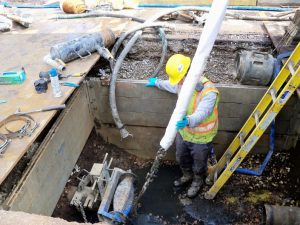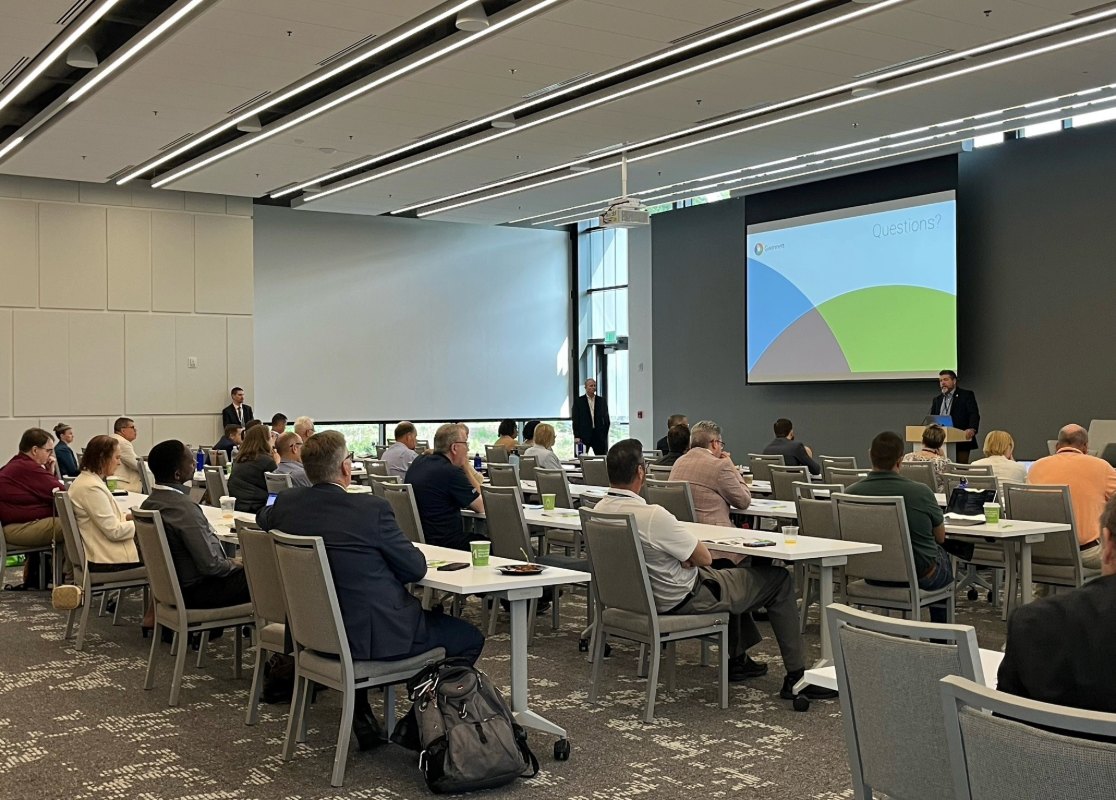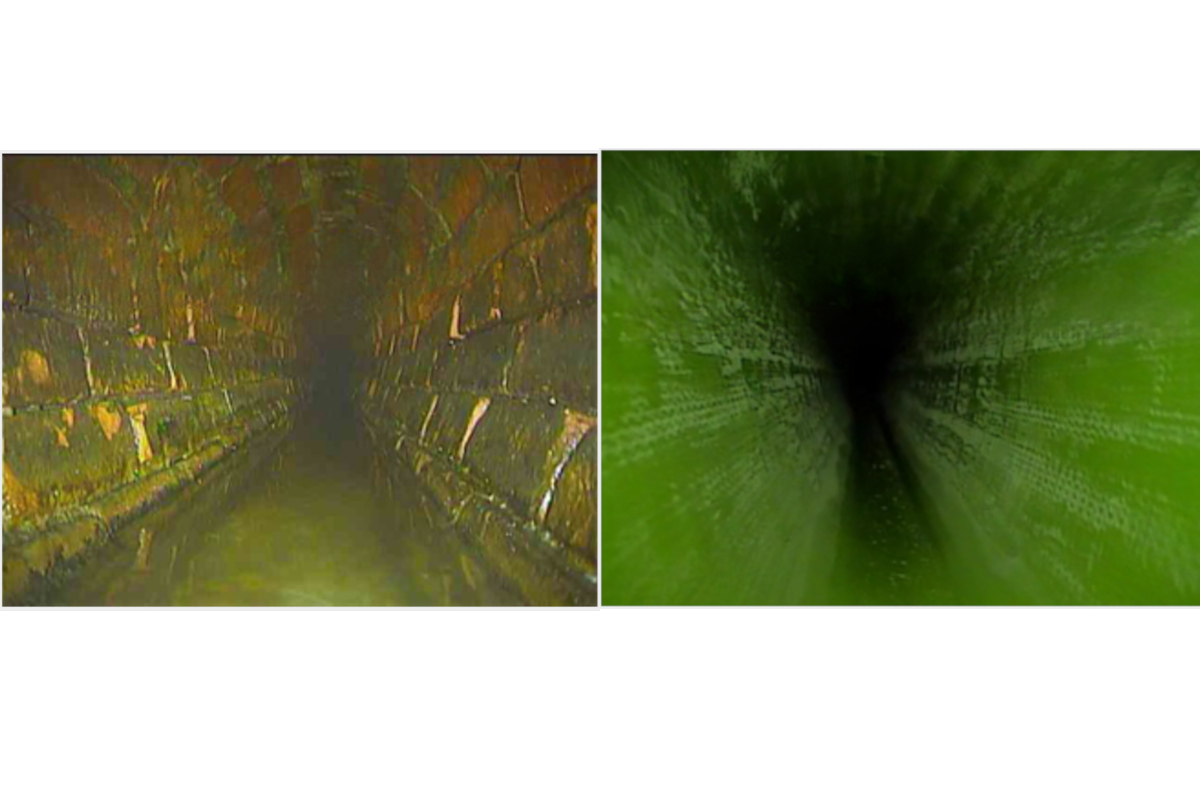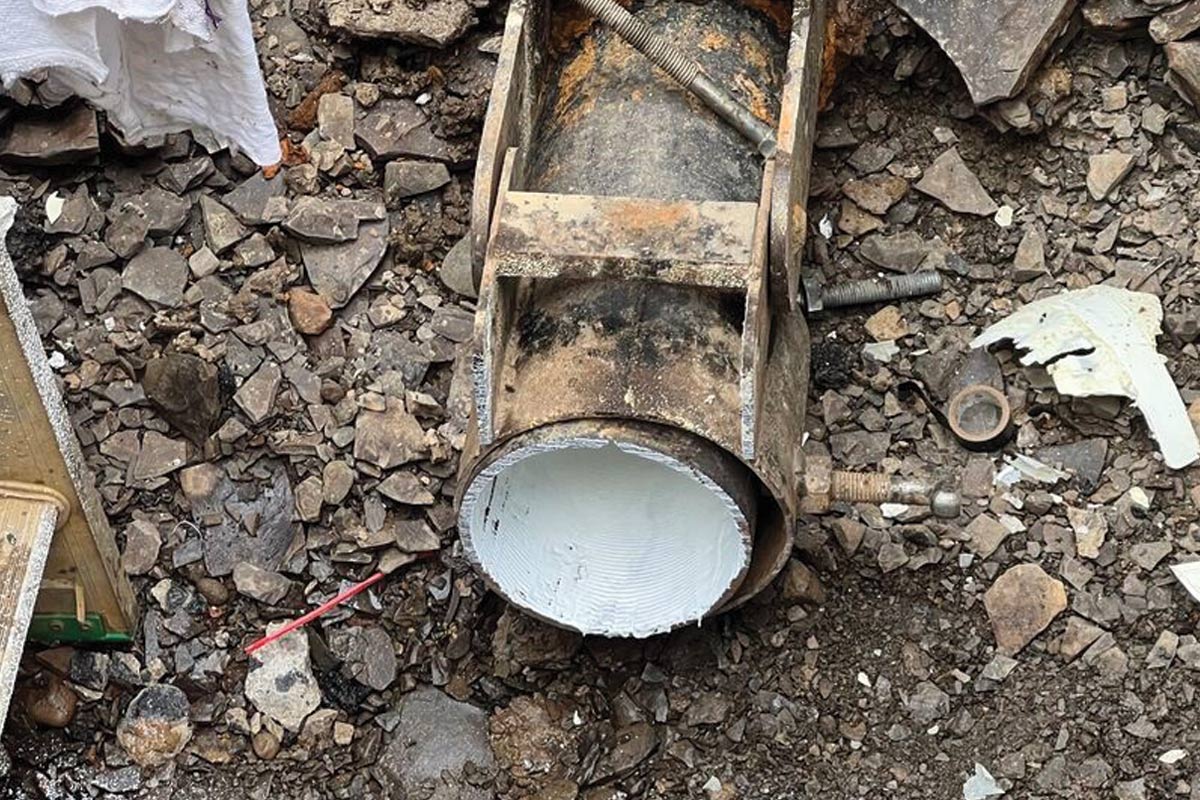
Huntingburg, Ind. Tackles Water Issues in Downtown District
March 2, 2017
 Stellar City Tries Trenchless
Stellar City Tries Trenchless
When the downtown district of Huntingburg, Indiana – the city you lead – is known for its unique shops and restaurants and looks like it could be a Hollywood movie set for Midwestville, USA, planning an open-cut construction project for water main work just won’t do.
That’s what the leadership of Huntingburg, Indiana – a city of approximately 6,000 residents in the southwestern corner of the state – faced when it came time to rehab the more than 120-year-old cast iron water main along East 4th Street. The project, long on the City’s wish list, came to the forefront when Huntingburg received Stellar Community status in 2014 from the Indiana Lieutenant Governor’s office.
The Indiana Stellar Communities Program is a multi-year, more than $58 million (investments to date) initiative that develops strategic community investment plans, promotes partnerships and implements comprehensive solutions to address local challenges in Indiana’s smaller communities involving community economic development, housing, transportation and overall quality of life.
Related: Pipe Failure Leads to Multiple Successes for Sanitary Sewer Project
“This designation provides the investment and technical assistance to fast-track nine individual projects over a four-year construction window. The projects total over $42 million and are funded through the state grants and strategic private partnerships,” says Jon Craig, client administrator, Midwestern Engineers Inc. “This level of investment is transformational in a community of 6,042 residents and creates a platform for increased private investment in the city.”

The Huntingburg, Indiana pipe relining project was in the heart of its historic downtown.
Huntingburg received its designation in 2014 and with the funding city leaders plan to enhance the downtown area via a streetscape. Knowing full well that the water main below the street needed work the time for the repairs was now.
“The streetscape project gave us, for lack of a better term, the political will to move forward and say we have to do this now. Once we got the Steller Community designation, we knew we couldn’t throw good money after bad,” says Mayor Denny Spinner. “We did not want to put new streetscape on top of a water line that was prone to failure. We wanted to make sure we had secure infrastructure underground before the streetscape commenced.”
The superintendent of the City’s water department was aware of trenchless rehabilitation techniques and city leadership tasked him with conducting all of the research to find out the pros and cons of this new (to the city) method for pipe repair. Spinner says when they were presented with the options, it was clear that trenchless was the way to go.
Reasons for going trenchless include moving the project along at a faster pace, not having a complete interruption of service and not impeding foot and vehicle traffic downtown.
“We wanted to maintain the integrity of what we have downtown because that is why people come to Huntingburg, so doing it with minimal disruptions was the goal,” Spinner says.
Condition Assessment
City leaders knew for years that the section of water main was a problem. There had been frequent breaks requiring patchwork repairs and there were pressure concerns not only to the businesses but for firefighting, as well.
RELATED: Condition Assessment Helps Calgary Systematically Repair, Replace Water Mains
According to Craig, for a 120-year-old water line, the structural integrity of the iron pipe was actually good. Much of the City’s problems were with the corporation stops blowing out of the pipe on a regular basis. The pressure concerns were a direct result of tuberculation, greatly reducing the capacity of the system in the project area.
Scope of Work
After making the determination that trenchless was the way to go, the City worked with Midwestern Engineers to design and manage the project, vet contractors and also work with them on the public information end.
Based in Indiana, Midwestern Engineers is a 58-year-old firm that is no stranger to water and wastewater construction projects. It is also familiar with trenchless rehabilitation on the wastewater side, but the Huntingburg project marked its first foray into trenchless relining for a water distribution system.
“While lining projects are standard practice for sewer systems throughout Indiana, this was the first use of CIPP technology in a water distribution system (that was not a transmission main) in Southern Indiana,” Craig says. “As the project moved forward numerous utilities, state agencies and industry professionals closely observed the project due to its uniqueness for the region.”
Midwestern Engineers determined that a structural cured-in-place pipe (CIPP) liner would be best suited for the project along East 4th Street. The City was confident enough in the process that it added Jackson Street, an adjacent residential thoroughfare, to the project.
Fer-Pal Construction USA, of Taylor, Mich., an AquaPipe licensee, was contracted to reline more than 1,580 ft of 8-in. and more than 940 ft of 6-in. cast iron mains.
“AquaPipe demonstrated that their product would perform and work for the City,” says Richard A. Burch, P.E., director of engineering at Midwestern Engineers. “Similar projects were reviewed and a site visit was made in Northern Illinois to evaluate the product and the installation of the liner.”
RELATED: Trenchless After Hours: Fer-Pal’s Shaun McKaigue Takes Top Honors in Ultra 94 Porsche GT3 Cup Challenge Canada Gold Series
Not only did Fer-Pal install the AquaPipe liner, the contractor handled bypassing for the project to ensure limited disturbance to 27 residential connections on Jackson Street and 80 commercial connections on East 4th Street. Fer-Pal also tied the line into the distribution system, which required the installation of 23 inserting valves and 31 gate valves ranging ins size from 4 to 12 in. Crews also replaced hydrant legs with new tees and sleeves to connect to the existing mains.
“Each project is unique in its own way. Temporary water service required multiple lines, one on each side of the street. Lining of a wastewater main would require only one line for bypass pumping of sewage,” Burch says. “Excavation of multiple access points, approximately every 400 ft, was required for the installation of the water pipe lining.”
The City stipulated that the project start after the Garden Gate Festival held at the end of April and be complete before the Huntingburg Christmas Stroll, which kicks off the holiday shopping season in November.
“The time factor was a critical point of consideration because we did not want to interrupt either event,” Spinner says.
The project – from beginning to end – took approximately three months and was complete by June 28, 2016. According to the Mayor, traditional methods the City reviewed were estimated at four to six months barring any unforeseen circumstances below ground. One such circumstance did crop up when crews discovered an unmarked storm sewer on the first day of construction, but it was quickly handled and did not delay the process.
Communicating with Residents, Businesses
In addition to the tight timelines, the City made it clear to Midwestern Engineers and Fer-Pal that the project required a thorough communications plan. These included meetings before construction began and 48-hours notice of any closures, so businesses could properly notify customers. News releases with graphics were routinely distributed with project info and traffic pattern changes. Regional print and television media provided coverage of the project.
RELATED: Using CIPP for Water Mains
On the City’s end, it worked with the Chamber of Commerce and the Huntingburg Merchants Association on a promotion that encouraged shoppers to continue to visit the retail corridor during construction. This was possible because the location of the main is solely located under one lane of the east-west street. This allowed traffic to maintained in one direction for the majority of the work.
Spinner says that when people asked why the City was doing the work, he gladly showed them photos of the 120-year-old pipe and they quickly understood.
“From the City’s side of things, it was trying something new that had never been done in our area and we took a roll of the dice in doing that, but with our engineer and all of our investigation prior to it, we felt very confident going into it,” Spinner says. “With a minor snag or two along the way, the project went as well as we could have hoped. It also proved this is a technology that we will continue to explore. It’s not the right technology for every replacement project, but there will certainly be areas in our community where it will be the right approach. We are happy and to have it in our portfolio.”
It did not take long for Huntingburg to jump back into the fray as city leaders and Midwestern Engineers have a request for proposals out to reline the same vintage pipe along a two-block section of U.S. Route 231 the main north-south route through the heart of the City.
Mike Kezdi is associate editor of Trenchless Technology.

 Stellar City Tries Trenchless
Stellar City Tries Trenchless





